



















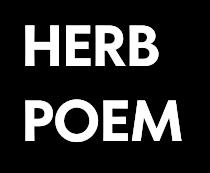


























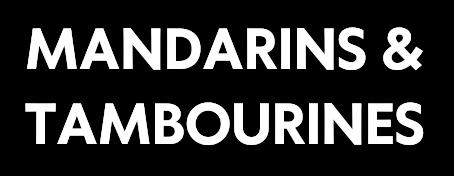






















This Spring issue of Beyond the Goddess blooms with the richness of a poetic landscape. A tingling desire to explore the outdoors, to taste the wind, and bask in sun-drenched gardens buzzing with pollinators, our passion for what we love extends our senses in this April awakening! Our fourth issue stylishly features visionary psychedelic artist Joe Mallory on the cover, delighting readers with his metaphysical paintbrush creations.
Our community has been instrumental in shaping this issue of Beyond The Goddess with pieces ranging from cannabis and media, the ganja revolution, and the impact of community effort. We are thrilled to share stories of a family that built their home in the Humboldt Redwoods, a marijuana homesteader in the Midwest, and the elusive world of landrace Sativa.
Aiyana continues the saga of her upbringing with “A History of Cannabis in Southern Humboldt Culture,” the third part in a series that focuses on the compelling journey of saving the Sally Bell Grove. This narrative shines a light on how cannabis in the Emerald Triangle strengthened counterculture and blessed us with the opportunity to give back to the land.
Daniel offers an irresistible article about his journey to Pakistan, exploring Tirah and the original Pakistani landrace cannabis genetics, emphasizing the brotherhood encountered there.
We are grateful for your enthusiasm and cherish your participation in this collaborative effort. Beyond The Goddess proudly showcases the cultivation of a regenerative new world by sharing individual projects, art, alternative creativity, and love for the land. We look forward to opening your heart and mind with our latest issue!!!
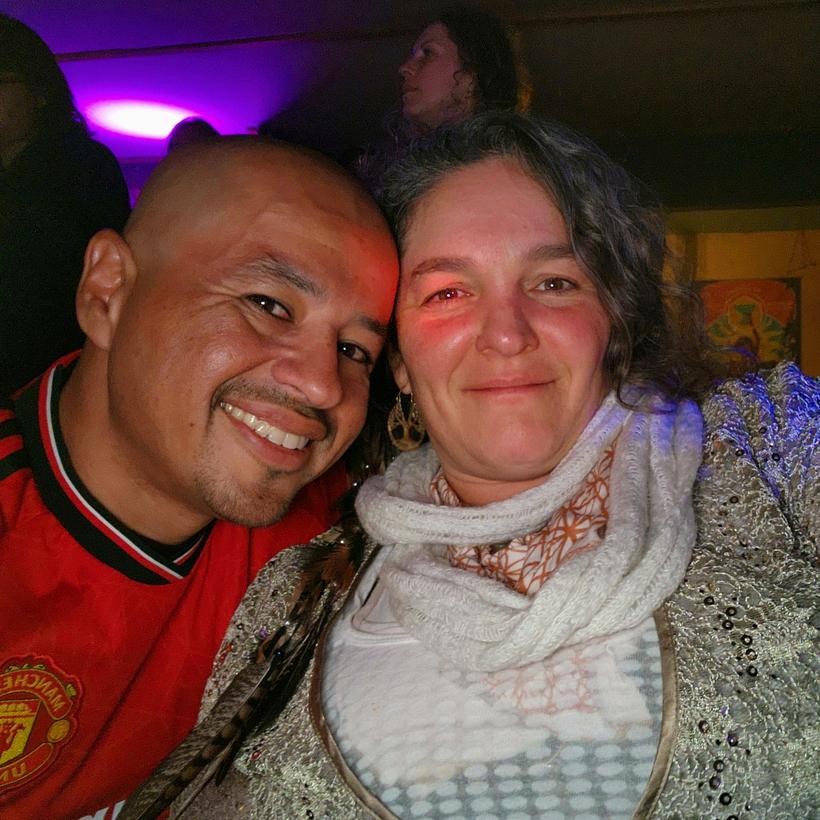
AiyanaGregori DanielMontero



Daniel started working as a marijuana professional in 1998, operating from San Jose, California to Humboldt County. Since 2019, GW Smoke Break TV has been committed to producing culturally authentic content for the cannabis industry, empowering legacy operators in The Emerald Triangle and beyond


Aiyana is a second generation Back To The Lander. She established Humboldt Synchronicitrees in 2016 with a dream of bringing regenerative cannabis to market. Today Aiyana is determined to support her beloved community through journalism and her vision for Beyond The Goddess and a more sustainable economy in Northern California.
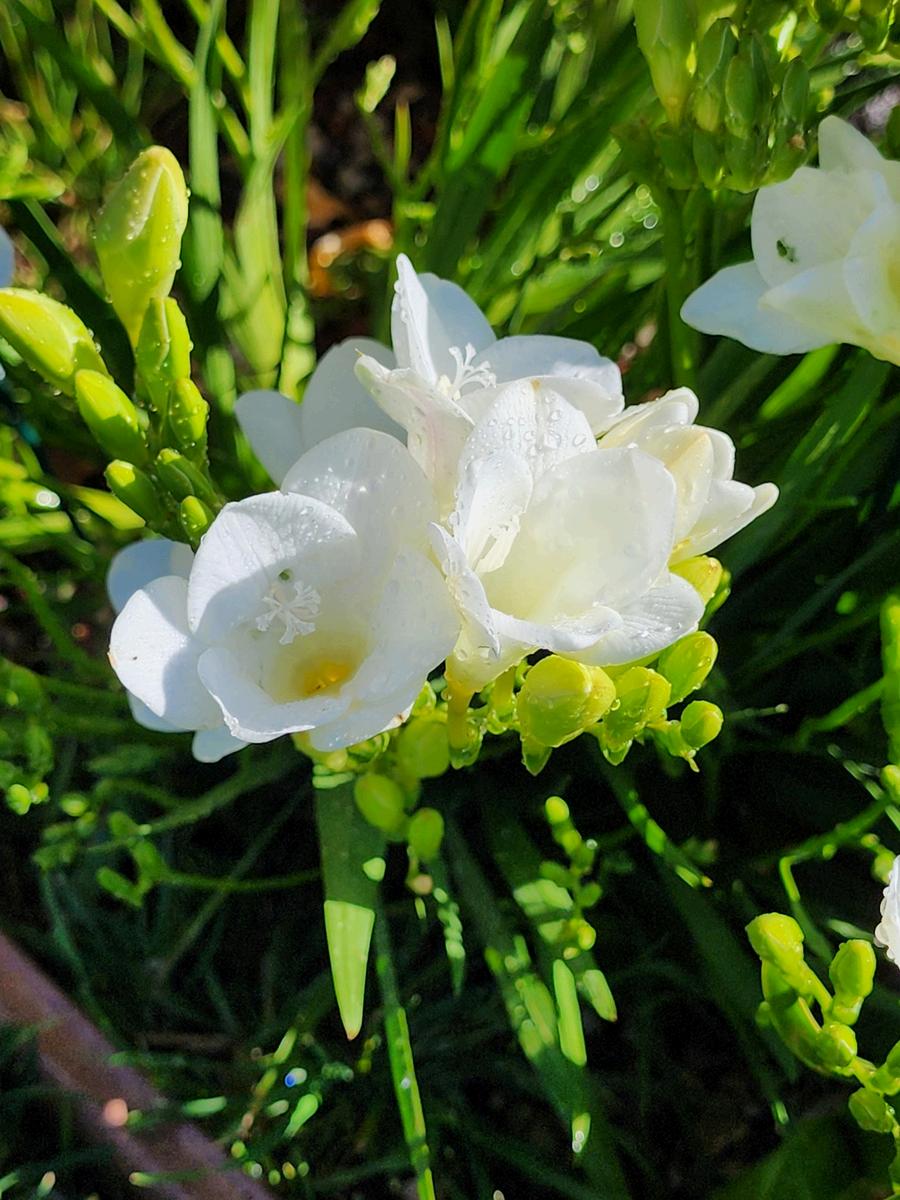 DANIEL MONTERO
DANIEL MONTERO

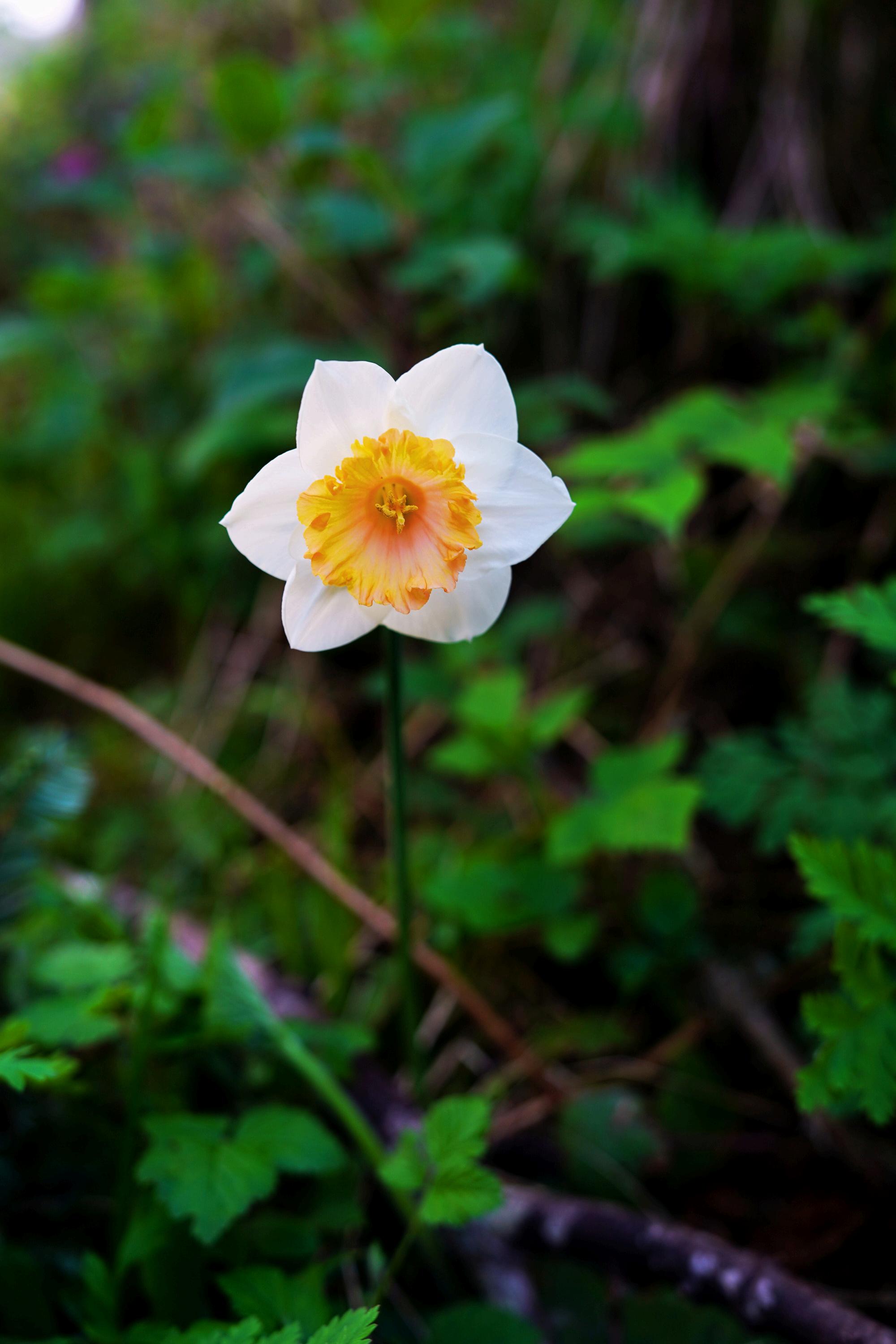

The wish of the goddess
Is for her daughter to find knowledge
To know the edge of suffering and desire
Our responsibility to the lives we effect
To understand the cost
Those who witness unto death
Understand the meaning of faith
Her daughter who Dreamed of flowers
Plucked the Daffodil
Whose roots ran deep into the underworld
Pierced by love’s arrow
The god of death opened the ground to waste And took her below
Were the lives of yesterday lay rest
Where the illusions of curses give way
To the mirrors held up to the souls of gods and mortals
A mother’s wish traveled below the veil
To find the god of death
To convince him to let the Persephone of life spring forth
In a yearly reunion of mother and daughter
This time with the knowledge of what lies beneath And the belief in herself
With this return to life
The prayer of the harvest goddess is answered
Let us all bear witness to our connection to all life
And the knowledge that they are all our children





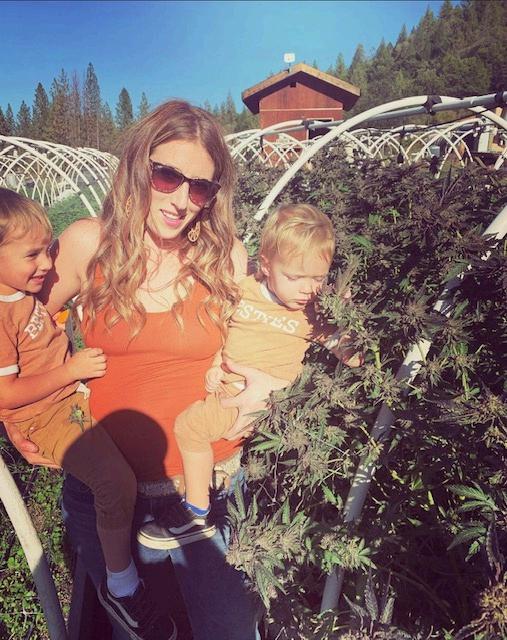
 BY JENNIFER HILL LIBOLDT FAMILY FARMS @COWSAYMO05
BY JENNIFER HILL LIBOLDT FAMILY FARMS @COWSAYMO05








Sunrae farms is a craft farm located in the heart of the Midwest, at the beginning of the Ozark mountain range. It is located about 1hr 20 min from st louis. Matt and I have 2 children who are raising in a more traditional lifestyle. We are teaching how to survive by hunting, fishing, forging, growing food,herbs, and cannabis. While homeschooling our children on our small homestead. We meet in the early 2000s at camp zoe. This is where our love for cannabis and the love for the cannabis culture started. Kind Bud! Sungrown herb from traditional market farmers. People would travel all over the US, following the music and spreading love! It was a cool underground culture that we each loved to be a part of, once we met each other we traveled around the midwest together, to different music festivals. After a lot of ups and downs and crazy stories,we had our daughter in 2016 and we had a son in 2018.
I am a first generation cannabis farmer but a third generation farmer. My parents taught me how to grow and preserve food, deer hunt and process the animal so nothing is wasted. I have always worked in the healthcare field, I worked at a mercy hospital for nine 9 yrs before I quit to become a full time mom, who homeschools her kids on a homestead. This was hard for me because I truly love helping others. I couldn't do both and I was spread too thin. Giving everything I had to my sick patients leaving very little for my family. Matt owns his own lawn care business.


2019 medical was passed in the state of missouri. Matt and I got our Cultivation / Caregiver license and became stewards to the plant. The researching began on building a small grow set room in the house that was already bursting at the seams. We made it work for a few more years, while looking for a larger house.
In 2021 we bought a small piece of property and this is where the real story begins. We looked and looked until we found the right fit. During the first few years living on the farm we poured everything we had into building the grow spaces. I was working 3, 12 hour days every week and on those days Matt would have the kids. The other four days a week I homeschooled. While, Matt was building indoor grow rooms, a flower room which is equipped with 5 rolling tables, automated irrigation, 15 lights and a veg room equipped with 3 4ft x 12ft self draining rolling tables, a place for mothers. Matt also started creating his lab space for extracting, we are.stkll.in the process of figuring out what we are going to do with the space. At some point we will turn the lab into a cold room. We are saving up for remodels. Lol.



Then COVID came and shut down the world, I realized that family is everything, and I wanted to spend more time at home with mine. After nine years at the hospital I was ready to embark on a new life. A simpler life as full time homesteaders, Who gardens, preserves food, and homeschools. Creating our cannabis farm dream on a very tight budget. We put every penny we made back into the farm.The process was long, felt like a sinking ship that weathered a Storm. We made it through, with many late night smoke sessions! Wow it was a ruff one! After creating the indoor grow space we had saved up enough money to begin building the outdoor garden spaces. Fencing and structures were the main focus at the beginning. We didn't have the extra cash to rent a tractor or bobcat, we flattened and moved all the dirt by hand. Put up a 20 ft by 40 ft hoop house with the help of our kids. We built a beautiful wooden privacy fence around the property. Which was not easy, because we had tons of rock boulders we had to break with metal pickaxe and remove, before we could dig the holes to put up the fence. This took the longest time just because we never knew how big the rock might be. Once we got the rock removed the fence went right up. Then, we started clearing brush and old trees, making for garden beds, and creating biochar with the trees that were cleared. Now that we had spaces created, we filled our beds with living soil. A recipe that we heard Bradon Rust talk about on one of his podcasts or interviews. Some of the items were hard to find in the Midwest.
We ended up having to outsource things from mines out west and pay outrageous frate shipping costs because there were no retail stores near us that carried the products we wanted to use. Buy once, cry once, right. We put in a bulk order and waited for everything to show up, with great excitement. Once the truck loads showed up we got to work mixing the soil up and pouring it into our beds with a concert mixer to be sure that everything was mixed. We filled 6, 4ftx16ft grassroots fabric pots with living soil. The outdoor grow space was ready for plants!! The 2021 season we grew a random mix of plants outdoors having no idea what would do well in the Missouri climate. It was a mess, to say the least. We planted way too soon, creating massive plants that were hungry, which led to huge pest pressure. Which leads to extremely unhappy ladies. Aphids were awful… not only that, we had high humidity, a short flowering season and some days it was really hot and dry while other mornings it was super humid, this created a mess of a micro climate in the hoop house. Which made me ready to remove the plastic off the hoop house. Then you get hit with snow and or rain with freezing temps. Great for hash! Not flowers. Man, it was a season full of learning and disappointment. One of the good things that happened that season was finding Zenthenol, Matthew Gates, his you tube channel became my best friend. Anytime I noticed something going with a plant or saw an insect on the plants I would take a snip, go to the microscope and check to see what was happening. A microscope is a must to be able to correctly identify any pest. Definitely a must have in the garden. After examining the plants I would go to Zenthenol and I would research his channel until I found out how to fix my problem in a safe and organic way. So 2021 was filled with a lot of education about the plant and her environment. The indoor garden in 2021 excelled Matt had some.of his best runs. We found an amazing plant. The violet vixen grew low and spread out like the roots of an oak tree, she did not want to stretch up or grow like a brush. We had not really come across plants that grew like her. Oh man! She smelled amazing too! She painted your nose with over ripe strawberry candy terps. She is a great all day smoker with a good uplifting take charge kind of medication. When it was time to cut her down for curing she was one of the prettiest plants we had seen grow. She faded this lavender purple color with bright orange hairs, and when you open the jar she just hits you in the face with berries! Yummy! The best part about her is that she also did OK outside too! This was a plus for us because we are focused on creating great outdoor meds! After a lot of learning that summer we decided to install more beds outside of the hoop house.

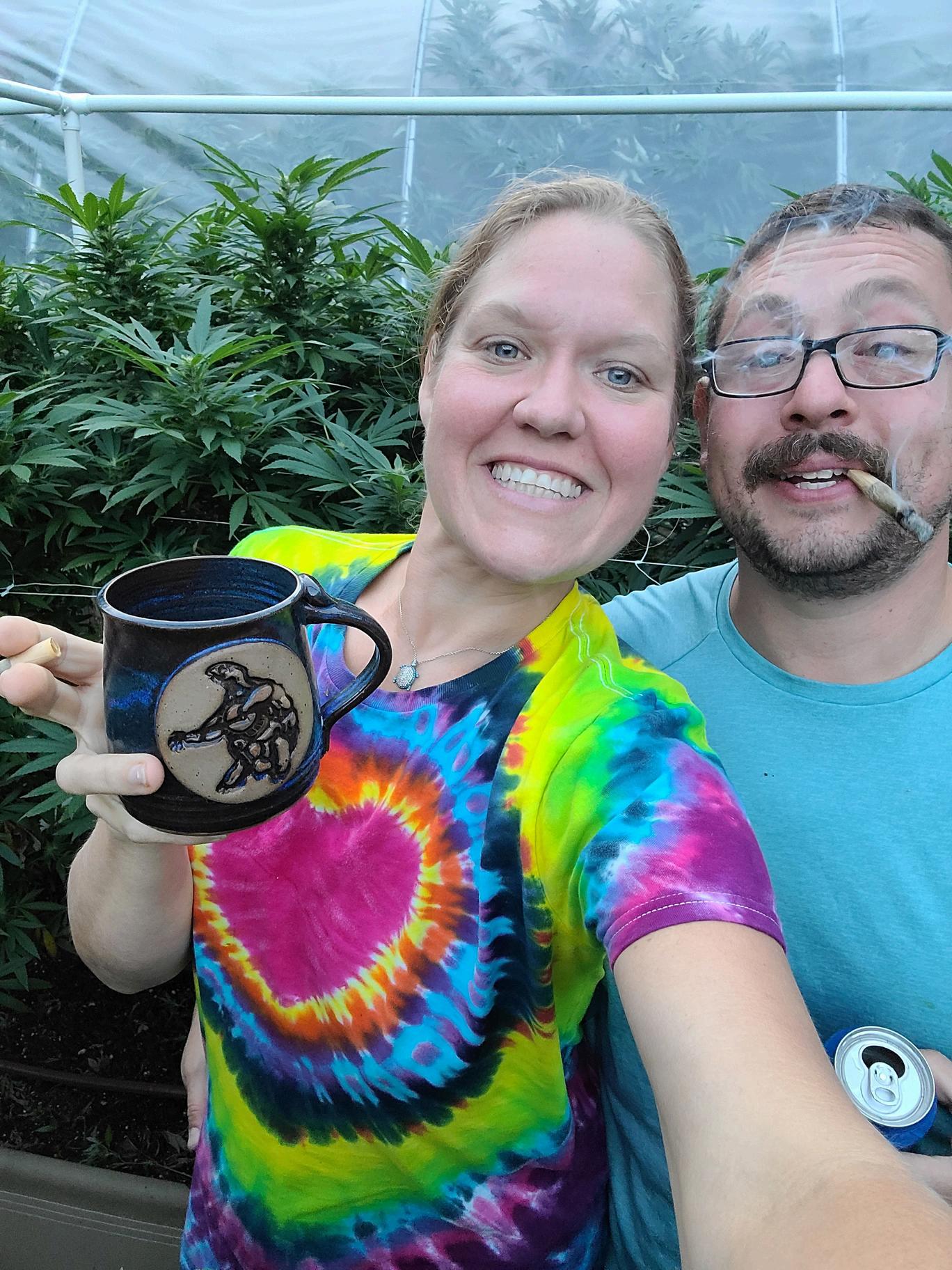




After that growing season we decided to put up 2 4ft x 16ft grassroots fabric beds outside the hoop house for veggies. We filled those beds using the hugel method. We went and found rotten trees from our property. We layered the beds with old rotting trees, a layer of old leaves on them and a layer of compost and filled up with leftover living soil mix left over from the hoop house, and topped them with straw. This is where I grew cucumbers and peas, herbs, petunias, marigolds and begonias. I companion planted them. I planted those flower plants and the plants excelled in the raised beds, but the tomatoes and other veggies were growing in the dirt on the hillside, not doing well, because of the clay they were growing in. Durning fishing/hunting season all the animal waste that was left over from harvesting the meat we put into the compost pile to help enrich our compost to feed the garden. I really like the thought of nothing going to waste and really giving the animal gratitude for life by using every piece of it we can. So we started to create a compost pile, so we could have food for the plant. We teach our kids how to really honor the animal and not waste any of it for taking its life to feed your family.. Once the compost was ready we topped the plants on the hill with them. We also taught the kids how to forge for food and other amendments to feed the plants in the garden by making fermented plant juices. Which was nice because it helped with the science part of school. After such a learning experience I had a lot to plan for 2022.
2022 I did things differently. I planned the garden out. I researched what plants might do well here in the Midwest. (I live in zone 6b 7A here in missouri.) I came across a Humboldt Seed Company, everything I was reading said how stable the genetics were. I looked through the seed catalog and found a few plants that might do well here. I had to figure out where I could get their seeds. I reached out and I got directed to a grow store in Chicago! I was stoked! Put in my order and got everything prepped while I waited.I ran mainly humboldt seed company genetics outside in the hoop house. I ran Blueberry Muffin, Dream Queen, Hella Jelly, Slightly Stupid Cali Man Kush, Vanilla Creme Pie, Fortune Cookie, Apple Blossom, Magic Melon, and Compound Genetics Violet Vixen. Outside of the hoop house in the 2 4ft x 16 ft veggies bed I planted Gelato 33. Oh my word, we found a plant that grows full term in our climate, she checked all the boxes! It was so fun to watch her bloom and grow into this 5ft x 5ft bush of blossoming colas! She was a site to behold, for sure! I enjoyed every part of her growing season from start to finish. She became a staple in the garden so we could breed her with the violet vixen. Next best plant was vanilla creme pie from humboldt seed company, she smelled sweet gassy cake. The structure had an og structure, nice colas, pest resistance, and the ease of growth, I was impressed. The Blueberry Muffin oh my the nose on that one speaks for itself. With the blueberry muffins treps we rolled her into many joints and gave her away to people so they could enjoy good meds! Apple blossom was very pretty with the bright pink distalite hairs, it gave the plant a fairytale-like look with a very light uplifting medicine. She was not the strongest medicine but she was very pretty! Magic melon did not do well here at all, the pest pressure was crazy. But she smelled so good I wanted to take a bite every time I checked on her. Honestly, it was a mess that year too. Only because I had to learn each plant and each one's needs, which meant long days in the garden studying my plants and the environment they were growing in to ensure the plant was at optimum health. For me it has always been about what runs best in the outdoor environment. I'm still learning what terpene profile works best for me. Which is why I have been having so many phenomenal hunts or terpene hunts so I can find my meds!
This year I also planted 3 food gardens. One in the Spring, summer and fall. I started the food gardens in November,I planted garlic so it could harden off during the winter and be ready in early June.

I companion planted food , flowers and cannabis that year. I started to learn that particular plants can keep pests out of your garden with the plant's odors. I would plant garlic in the hoop house in the fall so I could harvest it during the Spring, before the cannabis went in. This helped ipm the beds before the cannabis season, while also keeping the soil environment thriving. Outside I had already started creating soil on the hill, we layered a 3 ft wide row of potting soil, compost, straw and more potting soil because I was growing food on it. Tomatoes,cucumbers, melon,peppers and onions and a few herbs were planted in the garden that year. This started to break up the clay that was there,this is what I needed to happen. Creating a more nutrient rich soil to grow food in. We had noticed that there was a microclimate within our hoop house and extreme high humidity levels. We were ready to remove the plastic,lol. We did not. We just realized that we would be better off growing outside the hoop house on the hillside that I had already started growing on. Plans of 2023 have already started. No micro environment like in the hoop house. I just hope to have mother earth on my side at harvest! This meant we needed to get to work. We ended the 2022 season with a lot of great pheno and wonderful memories.
2023 will be the best season yet! We wanted to grow 12 different breeder cuts outside, so we could figure out what did best in our environment! We had truck loads of wood chips, compost, and topsoil delivered and we went to work trying to create soil for the plants to thrive in. We put wood chips all over the back yard, we layered compost and leaves on top to help break down all that organic material. Out of those 12 different breeder cuts.We found eight that we kept and bred with for the following year's crop. This year, I companion planted vegetables within our cannabis plants and had petunias at the base of the cannabis plants, as my cover crop and an IPM. The better the soil got, the busier my life became. Now I have tomatoes for ketchup, salsa, pizza sauce and diced tomatoes, cucumbers for pickles, Kale,cabbage, lettuce, Swiss chard, and strawberries all fresh from the garden. A garden that's being fed with organic compost that we created. Knowing that we can feed our kids food that is healthy without any pesticide or chemicals meant the world to me. I had also started making more vitamins and tinctures all from the herbs I grew and forged. We try to keep it simple. Every year I have more dreams about what I can grow on my small farm here in the Midwest. The 2024 growing season will be better than years before because we will be creating our own seeds, I can't wait to see where this journey will take us. But for now we are learning how to live off the land and thrive as a family who works together to steward the small piece of land that they call home here in Missouri.











In the heart of Southern Humboldt, a quaint campground known to my family as Neil and Edith's held the key to cherished memories that spanned across generations. My father, a Vietnam veteran, and my mother, a modest woman hailing from Walnut Creek, California, found solace and joy in the redwood corridors of this hidden gem.
In the early 1970s, the couple's thirst for adventure led them to the Russian River, but the desire for something more drove them to explore further. Consulting the old Rand McNally maps in 1974, they stumbled upon Neil and Edith's, a campground nestled east of the Eel River between Richardsons Grove and the Legend of Bigfoot Store. The campground, marked by a special entrance, boasted a bridge crafted from redwood logs each summer, providing campers a scenic entrance to their haven.
As their family grew, so did the tradition of including their children, myself and my sister, on these annual camping escapades. My first encounter with Southern Humboldt was as a newborn, cradled in the embrace of towering redwoods. The redwood corridor became the backdrop to my fondest childhood memories. Neil and Edith, the namesake hosts of the campground, orchestrated nightly campfires that illuminated the darkened forest. The flickering flames accompanied banjos, accordions, and a unique instrument fashioned from a washtub, rope, and a stick. The late 1980s and early 1990s were filled with carefree adventures, where tire inner-tubes provided endless amusement in the campground's swimming hole.
The Eel River, a calm force, allowed children to swim and revel in the joys of summer without fear of being swept away. Fishing in the rapids yielded plentiful steelhead, and, as I grew older, I contributed to the conservation efforts by catching squaw fish, safeguarding the river's native species. Under the canvas of stars, I would drift to sleep within the secure confines of our tent, blissfully unaware of the distant gunshots that echoed through the night. Inquiring at breakfast, I was reassured by my father that they were merely the sounds of hunters having their own adventures on the land.
Neil and Edith's campground became a sanctuary where family bonds were strengthened, nature was revered, and the echoes of laughter resonated through the redwood canopy. Those summers in Southern Humboldt remain etched in my memory as a testament to the enduring connection between my family and the timeless beauty of the great outdoors.
Year after year my family was drawn to the Southern Humboldt community, and I carry the essence of this enchanting region with me wherever I go. As time unfolded, I transitioned from a carefree child at Neil and Edith's campground to an adolescent discovering the profound connection between nature and spirituality in the vast expanses of Southern Humboldt. ( super curious to know if you were already living in Humboldt .. or a repeat visitor)
The closure of Neil and Edith's marked a bittersweet turning point, but it was at Hidden Springs, another gem in this magical landscape, where I found a deeper sense of purpose and spirituality. Amidst the towering redwoods, my explorations into cannabis became intertwined with moments of awe and reverence for the natural world. The Avenue of the Giants, with its majestic redwood trees, became a sacred space where I felt the presence of something greater, a force that manifested in the breathtaking beauty of the old growth forest.



My father, recognizing my evolving understanding of the region and its cultural significance, shared the legacy of cannabis in Southern Humboldt. This knowledge deepened my appreciation for the land, its people, and the unique heritage embedded in its hills. That summer, my father and I embarked on daily hikes, exploring the picturesque landscapes of Phillipsville, Miranda, Myers Flat, Weott, Scotia, and beyond.
The lush prairies adorned with clovers, the fertile lands teeming with ferns, and the towering redwoods captivated my soul. The journey extended to charming locales like Garberville, where Rays Grocery and the Blue Moon store beckoned with the charm of community and tradition. The allure of a burrito from Nacho Mama became a delightful ritual, and the swimming hole off Briceland provided refreshing solace.
From cabins in Redway to black sand beaches in Shelter Cove, each experience added layers to my affection for Southern Humboldt. Even in Shivley's farmhouse, I tasted the richness of locally grown produce. The evolving landscape mirrored my own growth, and I became a San Francisco Bay Area native with a spirit forever drawn to the redwoods.
Despite the passing of my parents in the last five years, their legacy lives on as we plan to spread their ashes on the Eel River, a final homage to the land they cherished. Southern Humboldt has imprinted enduring lessons on me, shaping my perspective and forging an unbreakable bond. My annual pilgrimage, now a family tradition, involves walks through lush landscapes, tree hugs, and a commitment to supporting the community by shopping locally.
As legalization brought challenges, I recognize the importance of contributing to the well-being of the resilient people of Southern Humboldt. The spirit of this countryside has become an integral part of who I am, and I carry it with me as a testament to the lessons learned and the love embraced in this haven of redwoods. To the community that has embraced me, I express my gratitude and eternal affection.

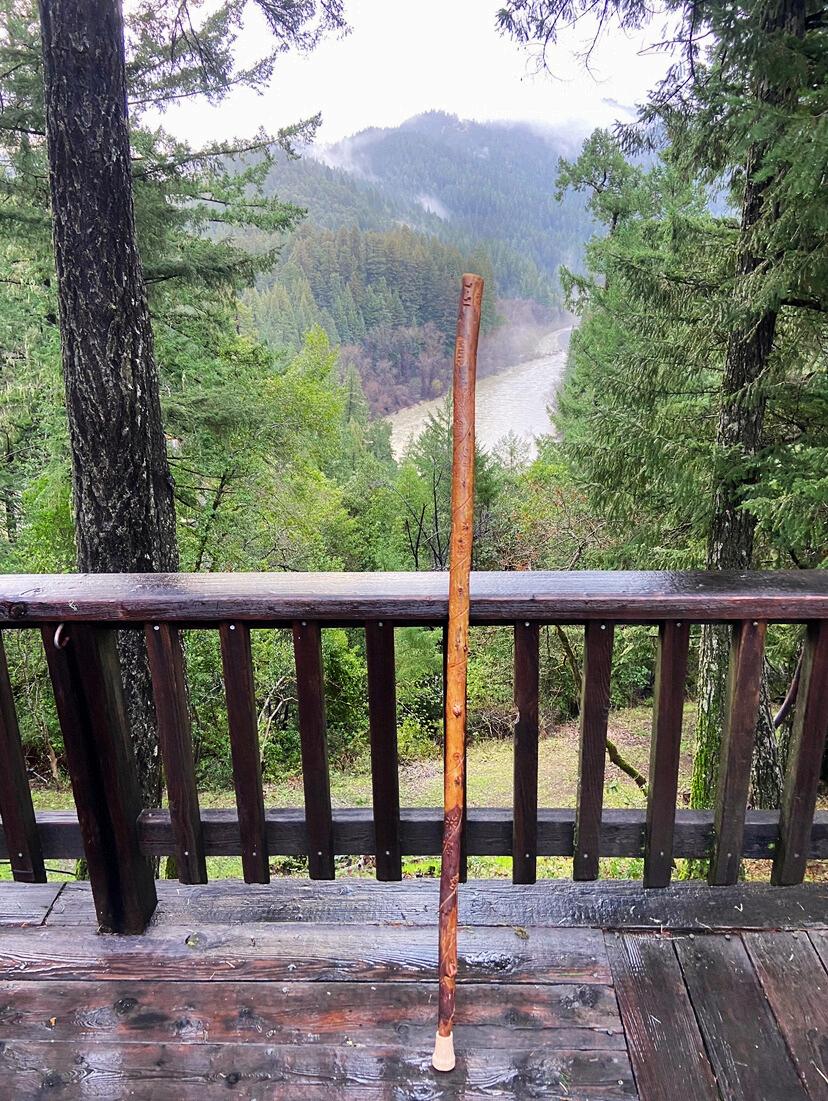










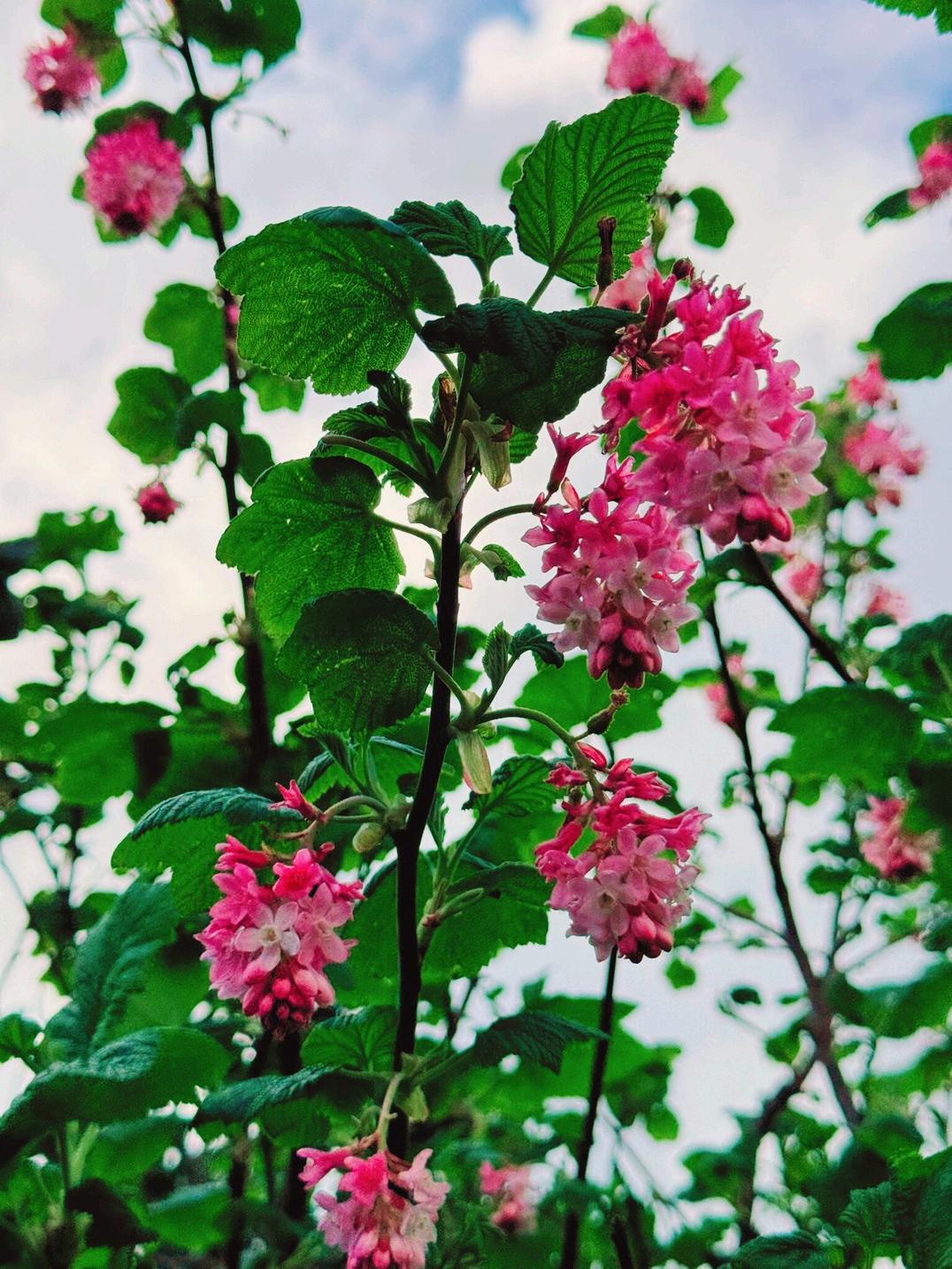

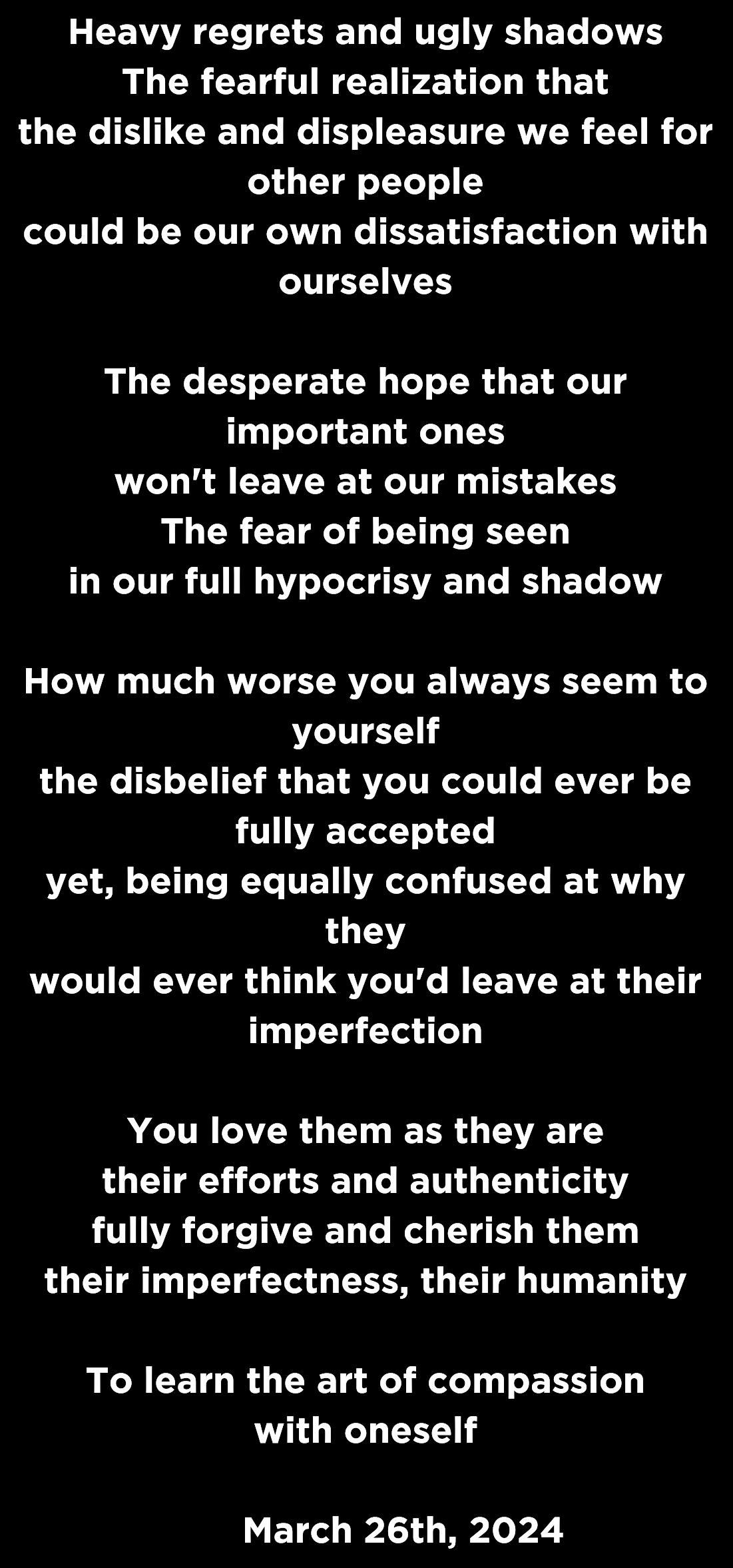






The establishment of a cooperative sector within the cannabis industry… What does this look like and how can it be done, here in the Emerald Triangle and beyond?
Let's begin with some synonyms. Cooperation in business is akin to democracy in business. When folks cooperate within a cooperative framework they are working democratically. Understanding this concept has led me to revolutionize my ideals on economics in what I’d like to say, an evolutionary way.
I envision a complete revolution of the cannabis economy from production to retail, especially for the small producers and operators who currently are struggling in some way or another navigating the myriad of logistical obstacles strewn about within the supply chain. From the logistics of the illogical track and trace system, to the often infeasible nature of transportation, distribution, and retail, all of these are barriers and hindrances to doing what we as farmers wish to do most, which is farming. We wish to supply the consumer with our passion, and our work: the cannabis flowers which we have painstakingly cared for over the course of a season, and in many cases, our entire lives.
Establishing a cooperative sector throughout the supply chain and in turn democratizing the cannabis economy would in theory alleviate the pain and heartache which we sustain from these obstacles of regulation and extortive practices, practices which put all the debt and liability upon the farmer. The big question is how? I will use another synonym which we can all surely relate to, even if everyone here is not a farmer. When preparing the garden we start with the ground, the soil. To establish a cooperative sector within the cannabis economy we must cultivate fertile ground in which it can thrive and succeed. The establishment of local and or regional cooperatives at the production level would be step one IF we had support from the power structures which oversee us. There are examples of this taking place now within the cannabis economy and there are numerous examples of this throughout the entire agricultural sector and on a global level.

Champagne, Parmesan, the bourbon industry in Kentucky, and even major powerhouses such as Organic valley dairies and Chiba i yogurt are all great examples of farmers and value aligned stakeholders who take the initiative to cultivate their own destinies. Collaboration and cooperation whether formal or informal is step one to building out the capacity of farmers, distributors, and even retailers to participate and or form a cooperative sector within the supply chain wherever we all may be located, one that can not only benefit these stakeholders but one that can benefit our communities and the consumer.
Imagine a network of nested or regional producer cooperatives throughout the emerald triangle and legacy producing regions. A confederation of collective production each within its own geographically unique county or appellation. Each one providing something unique, and distinct within a cooperative mindset rather than a mindset of competition against fellow small producers. Imagine these regional collaborations nested under one roof, or umbrella, a grand cooperative which represents the shared values of the individuals involved and of the communities in which they operate. Collectively this body of passionate like minds will be competing against the true adversary to each small individual farm, the corporate consolidators of cannabis. These corporate conspirators are truly the greatest threat to our livelihoods, our communities and in a macro context, to the planet. They are organized, they are funded, and they are entrenched within the Political system. We as individual farmers operating within a cooperative framework will be able to consolidate our power, on a local level, and on a level not yet realized throughout the legacy producing regions. With this collective organization and pooling of power and resources the potential expands. It expands to the next levels of the supply chain, to distribution and retail. Envision this confederation of cooperatives which operates with a central arm of communication and collaboration, much like the great work being done through our local and regional trade associations, except rather than advocacy and policy, this umbrella cooperative would be market focused and market driven.





The ability to consolidate power, resources, branding, and marketing would have a potentially massive impact on the state (and eventually national) market and bolster the collective ability to negotiate and leverage our weight in other areas of the supply chain.
Perhaps the leverage of our collective power would carry with it a momentum which can be used to further the cooperatization of the supply chain. Perhaps these pooling of resources and power would bring with it the necessary motivation and financial nerve to set up a cooperative regional distribution model. Now imagine the impact of a cooperatized system from production to distribution, one that would incorporate transportation, processing and packaging. With this motivation and newfound leverage there are certainly no barriers. Where there is a will there is a way. Even all the way to cooperative retail outlets which can be located throughout the state amongst the greatest concentration of consumers, negating our reliance on third parties who don't share our values nor hold our best interest in their hearts.
To achieve these goals there is no time like the present. A time when an industry is in this fledgling state, not long after it’s emergence from the shadows of legality. At a time where we DO still have time, before federal legalization or rescheduling takes effect. What greater time to establish a cooperative sector in cannabis, before the lifting of federal prohibitions truly opens the floodgates of corporate consolidation. What we face here is not an existential crisis faced by every other agricultural sector in the world, a crisis which has decimated rural America, rather what we face here is an opportunity, perhaps the greatest opportunity ever given to an industry. We have an opportunity to democratize cannabis and establish a cooperative sector before the talons of corporate behemoths truly sink their claws in our passions. Imagine this potential and imagine and manifest the success of this opportunity we are faced with. Herein lies the work which this planet so desperately needs, the work each and every one of us needs. Every single human being is integral to manifesting and committing to this dream, to enable the farmer’s continual pursuit of their passions and to create a sector in our society that does not work for the elitist agenda but one that works for each and every one of us.

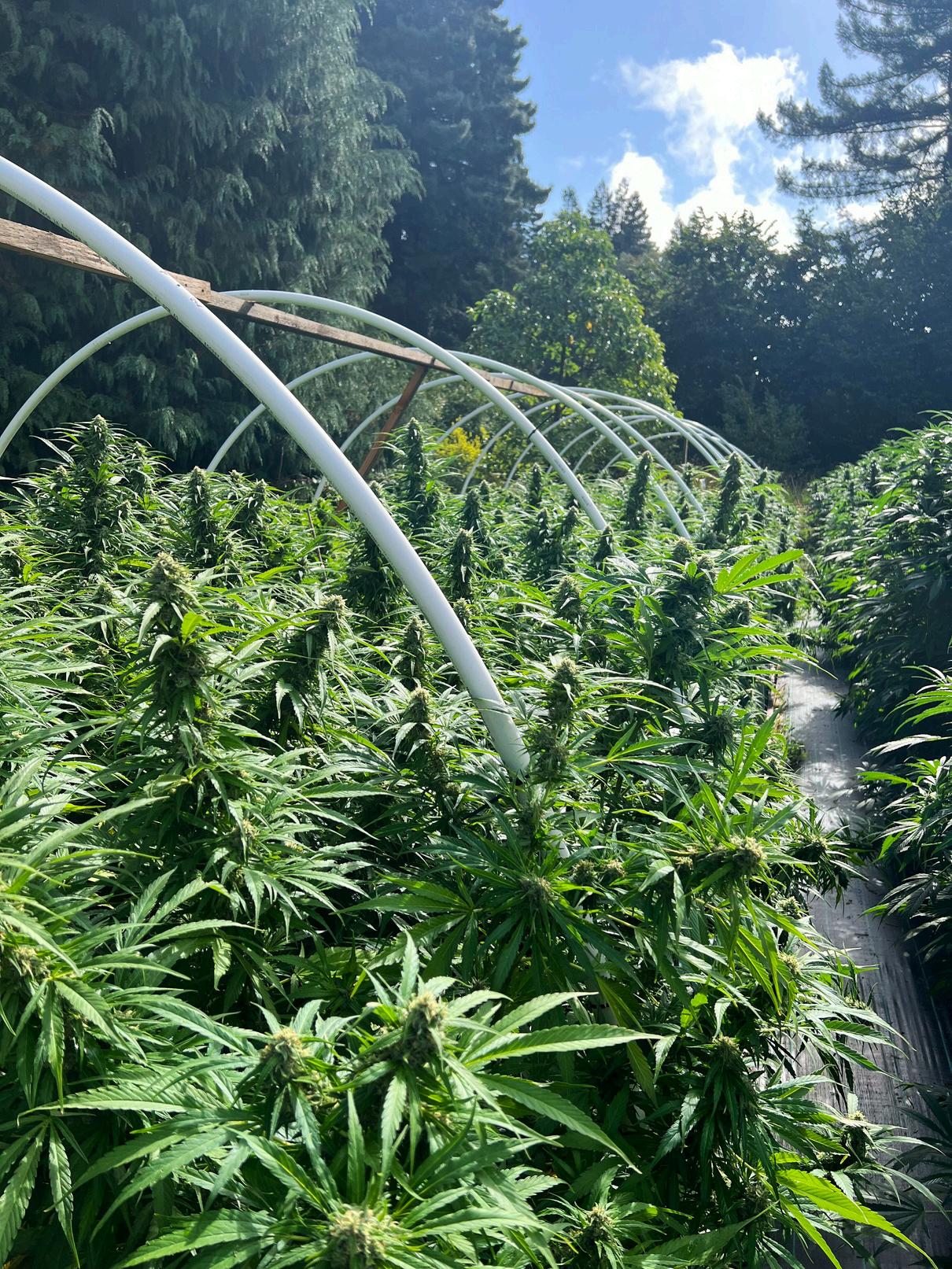







Joe Mallory grew up surrounded by artists, in Carlsbad, San Diego County in a house full of art. His grandfather was an art collector and owned “The Mallory Gallery” full of crazy psychedelic art. He was also friends with Dr. Seus! His mother was an amazing illustrator and painter, & would assist him in learning to draw. He was a nonstop doodler, never able to focus in class unless he was drawing. His education included art history and he found great inspiration in impressionists such as Van Goh where he learned It’s more valuable that it’s imperfect, expressing how you relate to the energy you depict.
His creativity thrived on beaches & nature and he felt pain watching the wild spaces become consumed by shopping malls and parking lots. Soon, the disconnect from the land was clear. “I’d rather paint a landscape of how it used to be, and how it is underneath everything. It has always been my inspiration to depict the sacredness of the land we live on. We remain disconnected while indigenous communities have nurtured this land for thousands of years. Growing up there helped me escape this city. I didn’t want to participate."
He arrived at Humboldt State University to obtain an environmental studies degree completely unaware of our psychedelic, conscious hippie cannabis culture! Only knowing about our tallest & oldest trees, he felt compelled to connect with them on a daily basis. He needed to be somewhere he belonged and didn’t appreciate destroying nature.



Catalyzed by his first music festival at 20, he saw a plethora of visionary artists live painting things he’d always drawn as a kid. He went home to figure out how to recreate his drawings with paint and was encouraged by the loose, expressionistic nature of live painting. Despite partial color blindness, he has allowed himself to develop, learning a little more with each painting.
In Humboldt, he discovered slower paced, openminded people, and now enjoys a strong connection with the community and nature. He loves being part of ‘a family’ versus one person in millions of people. It’s a paradox. The fast pace of the city made his head spin.
In the piece Between Lives, he is depicting reincarnation. Metaphysics and paranormal experiences with passed relatives opened his mind before experiencing it through psychedelics. Some may say mind-altering substances simply create a chemical alteration. Joe sees them as opening another channel of reality.
“Seeing the energy connecting everything, you realize that the way you think affects the way you experience each day.”
His journey to understand consciousness includes past life regression stories, near-death and paranormal experiences, as well as E.T. and UFO encounters.
“I’ve done past life regressions and spoken with psychics. I know our soul energy exists with or without our body. It’s an awareness and a consciousness that we see through different perspectives. We all play unique characters, but behind it all, there is only energy. Knowing this is the big lesson that I’ve learned through the Law of One.”



Joe integrates invisible beings, mandalas, sacred geometry and energy in his paintings. Cannabliss and Dessert Diffusions are examples . The Law of One, a channeled material from the ‘80s, is a major influence in Joe’s perspective of life. He sees it as divine knowledge. It describes a reality from an interdimensional view that everything in the universe is one being experiencing itself. In summary, everything around you is you. It can be beyond mental grasping. If it’s everything, it’s infinity.
Thus, multiple levels of experience encompass all unique lessons and characteristics. They incarnate every possible thing that could exist. Like a rainbow, wavelengths of light and layers of awareness can differ in density and speed. Awareness evolves over eons. It moves from soul to cell to plant and beyond.
Joe’s passion is to communicate these realities through art. He aspires to help people visualize our oneness. He believes that across vast spans of time and numerous lifetimes, we grow through both darkness and joy. We learn about individualism and love. Sometimes we have a challenging life, others are easier. Amidst the world’s darkness and chaos, these positive conversations go often unnoticed while only darkness prevails in the news. You can, however, find positivity if you want to create that reality.
Joe portrays nature as sacred consciousness. He depicts consciousness and energetic transmissions using sacred geometry by making faces in clouds, tree trunks & soil. Everything is aware in its own way. We miss this because of our narrow minded thinking. We live through different channels of reality. Trees and plants grow, move water, and communicate, assisting those in need. They live on another level of awareness, without complex societal issues and individuality. It’s more than just a mix of molecules. Trees live in a meditative existence, enjoying water and sun.






As in Autotrophic Transmissions he shows us the cycle of energy and consciousness between “autotrophs'' (plants) and the sun. They transform its energy into plant matter and often food through photosynthesis. The cover art shows his view of this process. According to Joe, the Law of One says that plants are soaking up the sun’s consciousness as they grow. We receive this by eating the food they give us. This is an exchange of energy going on at a fractal level that intrigues him deeply.
‘Duality in Nature’ was a commission to show winter and night, daytime and summer on opposite sides, with a deity in the middle. The dualistic nature of life, yin and yang, are present. We value summer because of winter love because of hate, light because of darkness. The central deity represents chakras, symbolizing life’s darkness. Darkness is still just an experience. Allow it to be, work through shadows, find the light, and avoid getting stuck. We can share the light this way. Obstacles make life exciting. It is part of us and we are working through it.
Joe paints animals, plants and people surrounded with energy and sacred geometry to portray consciousness in everything around us. ‘Owl Spirit’ is an example. The divine nature lives in everything. Sacred energy is all around, and everything is immersed in its own experience. Joe used to work as a volunteer in wildlife rehabilitation. He has handled owls, birds, and other animals and released them back into the wild. He comments that you don’t realize how smart birds and other animals are until you spend time with one. Tune into the physical perspective. Look deeper into the energy connecting everything. Some people belittle animals because they’re different. Their consciousness simply works differently. Showing people this reality is part of his life’s work.
“My mom has been building a relationship with the neighborhood crows. On top of the house, she noticed they were waiting to fly down. She constructed a perch and left bread and water. Because they all came over later on, she believes they informed their friends about it. They have their own society, they don’t speak English like we do, they speak crow.”






Joe has numerous paintings depicting our local nature. Yurok Coast is a tribute to centuries of native stewardship and harmonious coexistence with the land. His love for the land’s beauty here, the redwoods growing by the ocean, is evident in his paintings. He delights in sharing this unique connection. He also likes to paint landscapes that people resonate with, while creating an energetic perspective of the place.
Joe hopes to communicate another piece of reality through his art. He wishes to help people glimpse existence through energetic connection. Everything around is the energy of consciousness experiencing itself in different forms. Inspiring others to broaden their reality by exploring metaphysics and creation is his mission.
He plan to do live painting and a few workshops. Many of his paintings come from live workshops. He loves watching them build to their final work. It breaks the boundary of 'I can’t do that’ and creates ‘you can do this too’. While live painting, people want to see action and transformation, so the paintings are not as detailed, they are abstract and expressive instead. This way, within an hour of a live painting performance, there is a real transformation. He often adds details to their paintings at home.
He’s looking forward to teaching workshops in Arcata this year. Plans to do live painting at the festivals; lucidity, Still dream, Shambala in Canada, & Northern Nights are in place. Last year he painted at Cascade in Oregon, Same - Same in Socal, as well as Equinox and is hoping to repeat that this year as well. In Arcata he paints at psychedelic shows, especially bass, psychedelic rock music.
Joe has five albums of electronic music he’s hoping to get mastered soon. He plays guitar and harmonica and hopes to start a band. Psychedelic jammy instrumental bluesy rock music is what he loves. It is the counterpart of his art, including metaphysical samples of people channeling.
“Anyone who creates and feels discouraged, allow yourself to make mistakes. Give yourself time to progress and honor where you are. That’s how we grow. Don’t lose hope because you’re not there yet. Be constructive rather than critical.”
His music is on Sound cloud as Joe Mallory














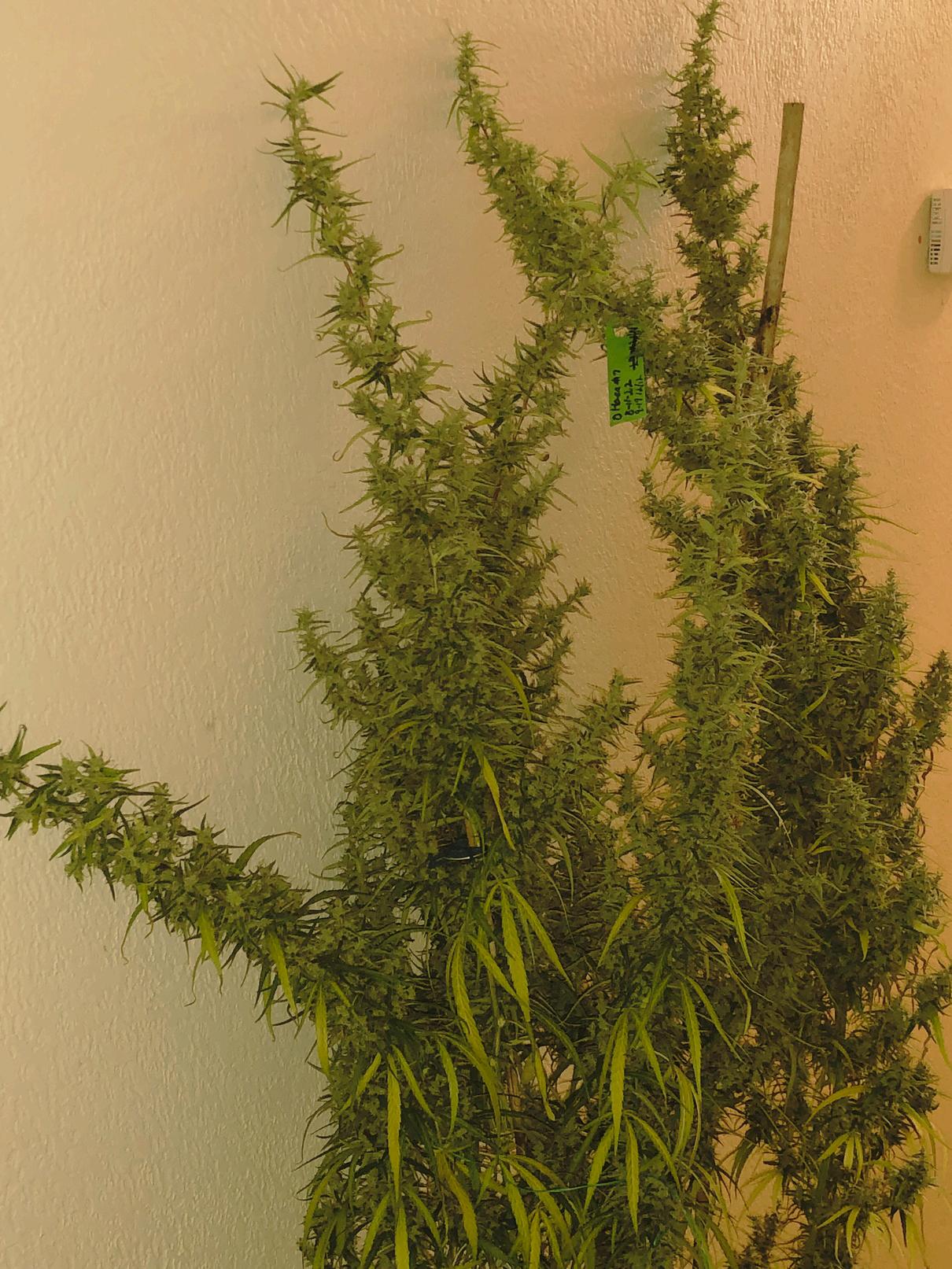




The first time I met Budularo(my Father-in-Law) he shared some long flowering varieties with me. It was new and interesting, but I wasn’t hooked yet. Fast forward 6 months, and we were on a vacation together in Hawaii. I hadn’t been smoking much of my weed that week which was unusual for me but I couldn’t resist trying the herbs Budularo had been raving about. So for the next week I took what I call an Indica detox. By the end of that week, I could really feel what Budularo was trying to teach me, I was learning what long flowering varieties are all about. His weed was like rocket fuel to my brain. It made me feel happy, positive and upful. I had never been so clear headed and focused, while being high at the same time. Pure irie vibes. We were in Hawaii, and it was magical. And it was a different kind of high, not the same ole’ get stoned and dazed and foggy. By the end of the week, I had fallen in love with what we were smoking. I remember we still had some left over at the end of the trip and we gave it to some of the employees where we were staying. I told the guy to disregard how it looks, I promise you’ll get really high. We saw him the next day and he was super excited to tell us his story about how high him and his friends got. They didn’t care what the herb looked like; it made them feel so good they wanted more. I learned then, you can never judge a book by it’s cover when it comes to herb.
Budularo has been growing in California since the late 60s. He has told me stories about growing Colombian, Acapulco gold, Jamaican, Thai, Vietnamese, Mexican and more. I like to refer to them as narrow leaf or long flowering varieties. Some people might call them land race, Haze, sativa. He talks about smoking Thai sticks and how much stronger, more expensive and harder they were to get.



I had heard these kind of stories growing up and was happy to find that there is still this type of herb being grown today! It made me realize that until I met him I had never seen anything like what he showed me. He has been growing for 55 years and smoking for 56 years. Over those years he has grown everything from the widest of wide leaf indicas(one difference between Indica/sativa) like Deep Chunk, Bubba Kush and pure Afghans to, Sour Diesel, Chemdog, Triangle Kush, Cherry Slyder and many popular modern varieties because that is what people wanted. He found himself bored with the modern hybrids and started only growing varieties he thought would take him back in time, chasing the experiences and feelings he got when smoking longer flowering varieties in the past which were from an experience he got when smoking the best thai and columbian which was a feeling of being on a magic carpet ride and soaring through the air. He could feel it go from his lungs and veins, and radiating through his body.
Budularo has been popping seeds for decades, seeds that have been given to him from all over the world: from Jamaica, Oaxaca, Columbia, Africa and Asia. Not a lot at once but often! He doesn’t grow commercially, he grows what he likes, and what makes him happy. And you know what – he’s on to something! When he found varieties that I really liked he would often pass them on to me. Although I had limited space at the time, I kept what I could and he was always very generous when it came to giving me seeds and plants. There were more than a few exceptional strains that he grew, some of which are crosses of long flowering varieties: Panama Red, Purple Congo x A5T, Band-Aid Haze, African Hazel 11, Holy Hahn, Vietnamese Black, Zamal x Thai x Haze(which flowered indoors for almost a year) and Pearly Queen(The Pearls) which are all 12 to 13+ weeks trains some taking 16 to 20 weeks to flower.
There are some great hybrids out there. The blue dream is probably one of the most popular hybrids of all time. It is reported to be a cross of a Santa Cruz Haze and a blueberry. The Haze would be a longer flowering variety and the blueberry would be a shorter flowering variety. Like a lot of varieties out there, blue dream got a bad name for various reasons. I think crossing a Haze with a blueberry was a great idea. I was living in Santa Cruz at the time Blue Dream got popular, and it was for good reason. Gigantic plants with long sticky spears that finish before Halloween and smell absolutely wonderful. Who doesn’t want that?!
My other favorite hybrid is the Bubba Kush X Original Haze. This was a special Bubba Kush that was selected by Budularo in a pheno hunt. It turned purple and smells more like OG Kush than Bubba Kush. It was named the Bomb Threat Bubba. This was then crossed with a male Original Haze and resulted in basically a Bubba Kush on steroids. The Original Haze really put a lot of vigor into the Bubba Kush which tended to be a slower growing lower yielding plant and turned it into an absolute monster. It produces long rock-hard spears that smell like roses, OG Kush and Haze, with a purple tinge to it. In cold weather it will turn very purple.
Over the last 12 years of working Budularo, I have been fortunate enough to smoke many different long flowering varieties and crosses from all over the world. I have been able to see the low yielding wispy buds to the chunky long spears. For the last 22 years, these types of varieties did not fit into my cultivation style. There were a few years I had stopped growing for myself. It wasn’t until several years later when I started growing again for my head stash that I was able to try to grow these long flowering varieties. Now it is all I want to grow and smoke.
When most people think of narrow leaf varieties, Sativas and Haze they think of plants that can take a really long time to flower with very low yields which can be true in some cases, but not always.






Two varieties I have grown that are on opposite ends of the spectrum are the Pearly Queen and the African Haze 11. The Pearly Queen stretches more than any other plant I have ever grown. A one foot plant can easily reach 6 feet by the time it is finished flowering long strings of pearly calyxes. It is one wild plant. It is low yielding but very strong, and it is definitely worth the wait. If you can ever get your hands on some, do it! A couple hits will make you think twice about a third. My other favorite is the African Haze #11; it is a high-yielding, fast growing plant, also with a very strong upful high. It has a classic church incense, Haze, and some serious funk.
The effects from these long flowering varieties are unlike any experience I’ve ever had before with herb. It is like going to Baskin-Robbins 31 flavors and realizing I had only been trying half of the flavors they were serving. If you were to ask about the other half of the flavors they would probably tell you that they don’t make it as often because it takes longer to make and it is more expensive. But for those that are patient and are willing to pay a little extra you might find something you really enjoy that is very different from anything you’ve ever tried before. It will open your eyes to new experiences and make you want more.
For many of these varieties there is no crash at the end of the high. You won’t get the urge to take a midday nap like you would with a shorter flowering variety. You won’t find yourself at the snack cabinet unable to control the munchies. Long flowering varieties can be great for people that need to be highly productive and want to get high. It is great for people in the Tech industry that are on the cutting edge of technology. I have some engineer friends that say The Pearls increase their ability to find creative ways of solving problems. My wife likes to refer to it as lawyer weed; as a lawyer she becomes even more impassioned when consuming these varieties. Band aid Haze is great for depression and may even be used to replace pharmaceuticals in certain situations. These varieties can give you intense focus and clarity. Some of them have no ceiling, meaning the more you smoke the higher you get. They can leave you feeling euphoric, inspired, energized, and spiritual. They can be very strong. One or two hits is often more than I need.
Long flowering varieties will make you jump through hoops of fire as Budularo says. Most people don’t want to grow anything for 12-20 weeks only to have it not be what they expected. It may not look as pretty as a tight dense purple short flowering varieties, with it’s stretch and wispiness but it is beautiful in its own way. Plus, with the longer cycle anything can happen during that time and can be hard to keep a plant healthy for that long.






These strains take more skill and expertise to grow than your average eight week variety. It is hard to get them to finish properly outside because they don’t have enough time before winter weather starts to settle in.
Sometimes you might smoke too much and get a little bit higher than you wanted to and may feel a little bit uncomfortable. Once you work through it and jump all the way through that hoop of fire, you learn how to deal with it and you can enjoy it.
I remember talking to him on the phone one day and he was telling me about this variety that had been flowering for over 12 weeks and hadn’t produced any buds yet. He described these ong strings of calyxes that he called “pearls” that were on the plant; they were the only thing on the plant other than the leaves and branches. He let it go until it finally reached about 14 weeks and he decided to harvest. Not knowing what to expect when he did his first smoke test, he immediately called me and said “dude I found what I’ve been looking for! This is the kind of stuff that I used to grow back in the 70s. I've been searching for this my whole entire life and I finally found it after 55 years of growing.” Most people would have looked at this plant and thrown it in the trash. When he finally did harvest, he could’ve said hey check out this spindly weed, it doesn’t look that good it’s gonna be trash. But instead he gave it the respect it deserved and waited until it was finished. At the end of it all he was rewarded with the type of feeling he’s been searching for his whole life. This was a BIG hoop of fire. He's now in his mid-70s and still smokes joints all day every single day. For many reasons, mainly Budularo, I have been able to grow and smoke some of these varieties for myself.
“All weed is good, just different, as long as it was grown well.” This is something that Budularo says all the time. We all like different things in life, we all have different cannabinoid receptors and we all have different experiences that take us to the things that we like in life. Whether they be indica, sativa, narrow leaf, wide leaf, hybrid whatever. “It’s all good, just different.”






A Mandarin
So bright and tart
Tickles my imagination.
I pursue this thought
To the Orient
The Far East East of Eden.
Where the sunrise
Becomes my Mandarin in the Sky.
The totality of the Silk Road, Compares to this place, The Eternity of it all.
The birds here are majestic
And the Spring Equinox
Brings dances of courtship
As ancient and alive
Like the tales of mythological love.
The Tambourine sings to me, Always a memory,
A vivid image in my imagination
A warm caress of the wind
The smell of the forest
The taste of fresh river water.
The Mandarin Tree is here, Her leaves glowing
In my Mandarin Sky.
Her trunk glistening
Like a fresh marble column
Her branches reaching tall and true
Remind me of the space
Between the Earth and Stars.
The Mandarin Tree,
The Mandarin Sky, Where the Tambourine sings
My heart, the Tambourine
Vibrates and hums here
With colors that come alive
Like my Mandarin in the Sky.
March 24, 2024 5:27pm Lighthouse Beach Santa Cruz, California









A wise man once said that a pen is mightier than a sword. I think it may be mightier than even those sharp edges in this day of age. What do you wake up and turn to? Media. Is it any longer the “news” and local newspaper or has your bubble shrunk to the size of a well formatted thread that feeds and panders to only your liking? The power of the written word now has vast impact. One so powerful that at times its difficult to see what fake news is and what is not. Ai gobbles up every word, desperate to gain traction in the real world as a valid entity of crowd sourced information.
In Cannabis, Hemp- this is continuously true. With a massive underground culture that preceded the well-known internet that we all now covet. The facts now can be fully construed with ill placed media that spawns notoriety that may not even be deserved.
Take for instance the prevalence of what we know as “hype”. This bono fide wave of marketing and attention-grabbing campaigning can capture the eyes with well-placed graphics, logos, and text. When shared by multiple people for the same goal, this social impact can be exponential. This form of mission communication can be a good thing, when used properly with the correct directive. But how many reach these overexposed numbers due to purchasing the exposure- with the goals to trick others into believing a stout verified presence? How many people investigate the companies they currently support?
Over trusted and certified corrupt entities such as High Times have a name that brand recognition marketers see as timeless. The public eats up any information fed into the superhighways of sponsored content found in their innumerable publications (online only).
People pay for that content- and for most valid writers and random contributors of hands-on experience- they are not paid and averagely contribute to share information. In a sense this could be a positive thing… but here’s the trick.
When sponsored content is not announced- no one knows its sponsored. So, any publication can glamour up some Cannabis flowers or farm with proper marketing- pointing eyes to pander to the interests of a burgeoning new industry that may translate to sales down the way. A copywriter or content producer could be paid for reviews to highlight a genetic, a brand, a dispensary- whatever it is- a journalist can get paid to hype it. Therefore, semi invalidating the very content that is brought to attention if based on opinion or elevated context.
If that publisher has a dominating market share of views, those words become social facts regardless of the credibility of the claims. You can see this in obvious tones with the publicity alignment of such high-profile partnerships as Trump and Fox news.
That is not saying that some of light views are not genuine and backed by honest opinions, this is just shedding a light on the influence a content producer can have. Ai has begun to be so closely affected by clicks on articles and likes on media platforms, that algorithms can objectionably be controlled or influenced greatly by funding.



It is in our societies best interest if we do not validate or reproduce AI created materials. This practice inherently sends the almighty “google gods” the signal that it is ok for AI to scrape every corner of the ether world to collect every scrap of linguistics and human behavior. Every aspect of what we deal with in publications is commerce. Even what you see on your search engine such as google is paid for placement. Those that pay the most are put at the top, while those not paying into the system will be unjustly placed several pages down where no viewers end up finding them.
Literally cash money rules everything. Every aspect of what the spinning of information and technology in the world is…is commerce. So, when we validate Information with science and not just pander to the habit of clickbait information streams, we advocate for the first human right of educating our fellow humans with honesty and transparency in their missions and sponsorships.
This is the only way we can again gain direction of the mind controlling Machine that is media.




Marijuana; Support for a New Society.
From the mid-1970s, marijuana fueled dreams of a new society for the Back to the Landers in the Emerald Triangle. According to Swami and Nikki from Swami Select in Mendocino, in the 1960s people heard about affordable land up in Mendocino, Humboldt and Trinity and the migration began. People were purchasing patches of land, ranging from 20 to 40 acres, and establishing various types of dwellings, such as teepees, plastic domes, or tiny cabins, to live in. No one moved up here intending to grow weed for money. People had to be creative to survive. There was some carpentry, fishing, and a few town jobs. People were growing their food and raising children close to the land. They brought along ganja seeds to plant for consumption. Once the word got out that Emerald Triangle Marijuana was so much higher quality that the Mexican available, they could sell it. Growing a few pounds on the side was fuel for a new society and counterculture.
They grew cannabis to support their alternative way of life. It had little to do with money. The renowned reputation of the world’s best ganja came from a deep connection with mother earth and the plant. One of the new immigrants explains “People started growing their own food, planting marijuana on the side, and it burgeoned into an integral part of many alternative rural communities all over the country.” For over 40 years, marijuana has been a crucial support for this movement in Humboldt, the Emerald triangle, and across the country.
We grew up in a large extended community. During and after Vietnam, the Flower Children in the ‘60’s - ‘70s began moving up to Northern California. This was the Back to the Land movement & It happened across the entire US simultaneously. People lived off-grid, grew food, milked goats, and raised joyful children. They had natural home births, built alternative schools and educated us more creatively and openly.They built community centers, health centers, and started organizations to protect the forest and restore the past destruction. They searched tirelessly for ways to find solutions for humans and earth to live in harmony. We learned to value community, family and to protect the earth. A healthy lifestyle and freedom blessed us with joy as children. Many people and families volunteered for causes they vibed with. Our proud, unique cannabis subculture aimed to better the world. Live musical performances at the Mateel Community center or the Beginnings Octagon were full of children sleeping in the corner on mats around the edges.

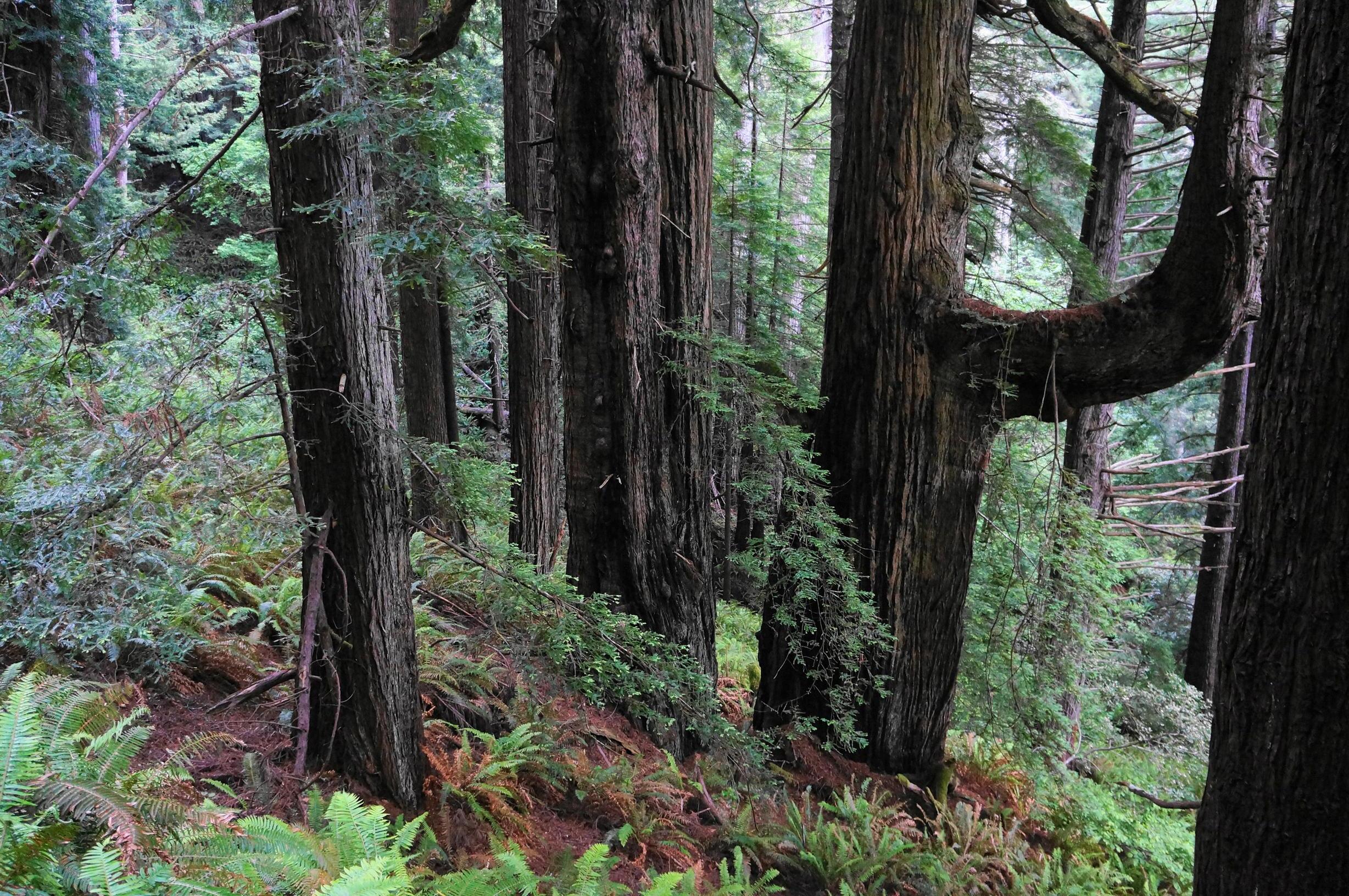


Richard Gienger One of the Strong Advocates to Protect the Sinkyone Wilderness Coast (The Southern Lost Coast)
Richard & Nonie Gienger moved to the upper Mattole river valley in 1971 & Whale Gulch in 1973. They raised three children overlooking the Sinkyone Wilderness and the Pacific Ocean. In 1975 Bear harbor ranch was proposed to be purchased for a gated Sea ranch type community, supposedly benefiting locals building expensive homes for the landowners. The Bear harbor ranch extends from Whale Gulch to Bear Harbor, & was luckily sold to parks and rec in 1975.
Georgia Pacific, owned around 7,800 acres, between Bear harbor and Usal &, persisted in logging in the area focusing on the elimination of any remaining old growth. Mel Lynn offered to take Richard to see the Old-Growth redwoods and Douglas Firs, above Mistake Point below what would become known as the Sally Bell Grove watershed. There were close to 400 acres in this spectacular small coastal watershed. In September of 1977 Georgia Pacific submitted a harvest plan for overstory removal in the whole watershed. CDF told G.P. that was too much and they would need to cut all the timber in stages. The first stage they approved included an 80 acre and a 40 acre clearcut on either side of what became the Sally Bell Grove. This precipitated a struggle that lasted close to 20 years to achieve adequate protection of this special coastal area.
Community Support in opposition to the cutting along that coast was across the board and constant. Field trips to hike to Sally Bell Grove often had up to 100 participants. Organizations like E.P.I.C. or the Environmental Protection Information Center were critical in the struggle. Community Members of Whale Gulch, the Mattole and all Southern Humboldt and Northern Mendocino, and much of the state, and beyond, were engaged. The struggle took place in the media, in the California State Administration, and Legislature.

One of the dramas during this period, was the role of The Mateel Community Center (named from two local rivers, Mattole and Eel) in community awareness, and fun, and fundraising. The original Mateel Community Center was in the Garberville Fireman’s Hall. A benefit was being put on a benefit to help save the Sinkyone wilderness. Etta James was going to play and support the cause. That benefit never happened however, because an arsonist burned down the hall.





As a result of the fire, to rebuild the community center, a brainstorm by Carol Bruno and Shelby resulted in the historic event Reggae on the River enabling the purchase of the present day land and building of the present day Mateel Community Center.
Cecelia Lanman, my mother, came from the east coast to work with Cesar Chavez in the farmworkers movement. In 1976, after searching the entire north coast and Canada with mom & dad, we camped at the delta of Mattole Canyon Creek and they fell in love. I was only one year old. We moved from the Bay area in 1981, when they (Cecelia Lanman and Gilbert Gregori) became involved in the environmental movement. They began working with E.P.I.C. during the fight to ‘Save the Sally Bell Grove’.Their first big lawsuit was to protect that grove. My mother Cecelia would eventually serve 17 years as president of the organization.
The Timber Wars of the lost coast were very demanding. Constant meetings, hearings, gatherings, benefits & lawsuits filed their days. Frequent trips to Sacramento to confront the state, even Federal courts at times laws were a constant. Despite the turmoil, we children continued to play. We wanted to imagine how to create a more positive future.
A land of great beauty and abundance. The rugged coast was once teaming with game & edible plants. The ocean and rivers were bursting with salmon and shellfish. The Sinkyone were a peaceful people who thrived for eons before settlers arrived in the 1800s, taking their land and massacring them. The land once cared for by the Sinkyone was under ‘ownership’ of G.P. It was thought to be the largest unprotected coastal roadless area in the continental US.

 Tom & Sally Bell. The Last Sinkyone Natives. Shelter Cove.
Tom & Sally Bell. The Last Sinkyone Natives. Shelter Cove.

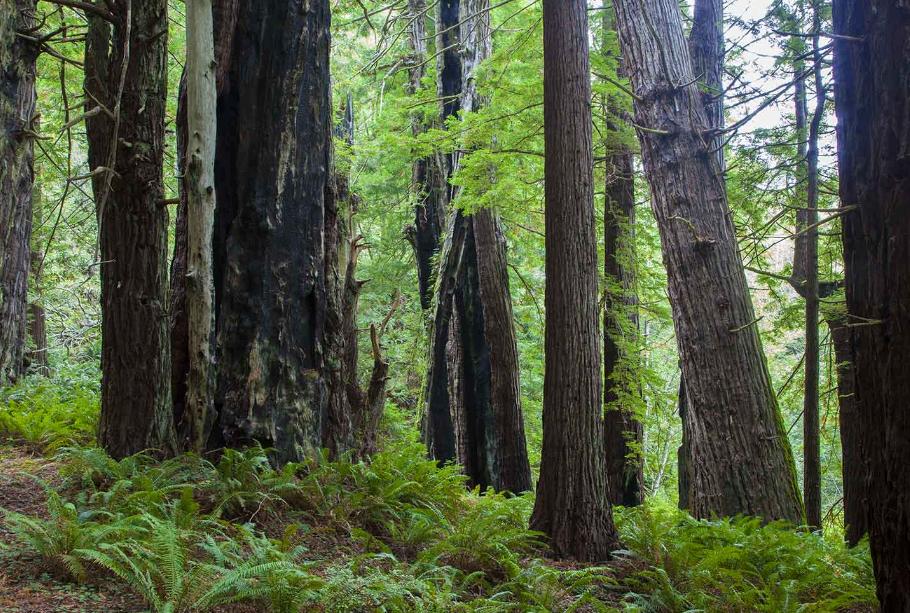





“During the fight to save the old growth, we needed a name for the main threatened grove in the land we wanted to save,” remembers Gil Gregori of Ettersburg. In a community meeting Joanne Bower suggested the name Sally Bell, in honor of the native woman who survived the massacre of her family at Needle Rock on the coast. Sally Bell was a midwife and medicine woman renowned for saving Fred Wolf, an Ettersburg rancher after he was born as a blue baby, by giving him Foxglove. She was revered and passed away in 1938.
While hiking in the Sinkyone Wilderness, I recall being with some San Francisco Chronicle Reporters who were out of shape. They wanted to write an article about the fight to protect the Sally Bell Grove. They had heavy 1980s cameras. My sister and I, 7 and 9 years old, had to carry their equipment so they could walk the steep wilderness trails. Later that day, while I was resting against the trunk of the Needle Rock tree, someone took a photograph of me with my eyes closed in the sun. That photo made the cover of the San Francisco Chronicle.
Shortly after, upon reaching the peak of the resistance to protect the Sally Bell Grove, my dad, mom, sister, and I journeyed to the Georgia Pacific headquarters to demand a meeting. The California office in Ft Bragg had refused to meet with them and wouldn’t even talk on the phone. They wanted to negotiate a “land trade” between G.P. and the State of California. Being from real estate, my father hoped to get their promise of sale.
“After setting up a meeting and a cross-country flight with my entire family, the G.P. The CEO relayed that his lawyer forbade him from meeting individuals involved in litigation against him.” Says Gil.
My Dad said he wasn’t part of E.P.I.C, which was true and he’d just flown for this purpose. After the CEO refused for the second time, we assured him we were ready to photocopy hundreds of flyers and inform the local media about the situation. After only two hours of passing out pamphlets, they invited us in and fed us kids burgers and invited my parents to the stockholders meeting. Of the five men was constantly interrupting Cecelia's presentation, only to be quieted by the CEO himself. The meeting was successful, and a key to the final preservation of the entire Sally Bell Grove and coastal area following the E.P.I.C. vs Johnson decision of 1985 and the actual acquisition in December 1986. Gil Gregori expressed with frustration that the families meeting was successful but Georgia Pacific would continue to clear cut wherever they could.






A key part that ended up forcing Georgia Pacific to sell about 7800 acres of their coastal holdings in Northwest Mendocino County was the successful litigation E.P.I.C. vs Johnson. The case started in September of 1983 when Georgia Pacific applied for a harvest plan to eliminate the Sally Bell Grove about 80 acres of the remaining old growth in that coastal watershed. The lawsuit included E.P.I.C., the International Indian Treaty Council, and three individual plaintiffs notably Fred Coyote Downey, a Wailaki Elder, against the California Department of Forestry and Georgia Pacific Corporation. The California State Appeals Court ruled that C.D.F. was required to consider cumulative impacts and had not, was required to adequately consult with Indian Tribes and people and to adequately assure that Native American Heritage was protected and had not. This was the precursor to the Trust for Public Lands, 3.4 million dollars from funds designated by the state, with help from Save The Redwoods League to purchase the 7800 acres in December 1986. An important addendum that will be covered in future issues, is the final acquisition of over half of the 7800 acres by the Intertribal Sinkyone Wilderness Council with key help from the public, the Lannan Foundation and the California Coastal Conservancy. This could be cited as an early modern example of land back. The majority of the over 11,000 acres protected is in either the California Wilderness system or Intertribal Sinkyone Wilderness.



We strive to show our readers real-life experiences of people who work hard to create a more harmonious, sustainable world.
I'd like to thank everyone I interviewed for their time and disposition.
A special thanks goes out to Richard Gienger. So Grateful.
References: Swami and Nikki Lastreto @swamiselect Interview 2024
Gilbert Gregori Interview
4/13/24 Cecelia Lanman Interview 2023
Agnes Patak Interview 2023
Cecelia Lanman Interview 2023
E.P.I.C Environmental Protection Information Center archiveswww.wildcalifornia.com
Personal life experience of Aiyana Gregori
Richard Gienger Interview 4/18/24



 Lost Coast Trail To Little Jack Ass. Sally Bell Grove Watershed.
Lost Coast Trail To Little Jack Ass. Sally Bell Grove Watershed.











